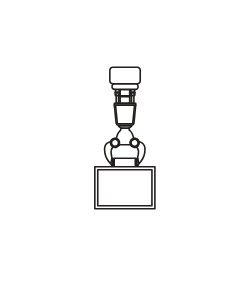The Advantages of CNC Machining
In today's fast-paced world, people are always looking for efficient ways to produce great quality products. CNC machining has gained popularity for its efficiency, accuracy, and precision. If you're still using manual methods, it's time to upgrade to CNC machining.
Increased Efficiency
CNC machining saves time in the production process. Once the program is set, the machines can run continuously without the need for operator intervention. A CNC system offers full automation, which means that the machines can work around the clock without fatigue or errors. Additionally, CNC machines have excellent repeatability, which means that they can produce identical parts with minimal variations. This feature makes it possible to produce more parts in less time, making it the ideal choice for mass production.
Improved Accuracy and Precision
CNC machining uses the latest technology to produce parts that meet the required specifications. Unlike manual methods, CNC machines have high accuracy and precision levels, and they can produce tiny parts with very tight tolerances. The use of computer programming makes it possible to produce more complex shapes that are difficult or impossible to produce manually. The CAD (computer-aided design) software and CAM (computer-aided manufacturing) software make it easy to create accurate 3D models of the required parts, which the CNC machines can use to produce accurate results.
Cost-Effective
Considering the efficiency and precision of CNC machining, it is cost-effective in the long run. Since the machines can run continuously, the production time is reduced, which cuts labor costs. There are also fewer chances of mistakes or errors, reducing the costs of materials and labor. Additionally, CNC machines have a long lifespan, which makes them a wise investment in the long run.
Versatility
CNC machining can be used to manufacture a wide range of products, including metal parts, plastic parts, and even wood. The machines can be customized to work with various materials and shapes, making them ideal for various industries such as aviation, automotive, medical, and consumer products. CNC machining can also produce larger parts than manual methods, making it possible to manufacture complex components in one piece.
Consistency and Flexibility
CNC Machining provides consistency in the production of parts and components. The machines can produce identical parts with little variation, which is essential for industries that require high-quality standards. Additionally, the machines can be reprogrammed to produce different parts, making them more flexible than manual machines.
CNC machining is an efficient and cost-effective method for producing high-quality components. The machines offer increased efficiency, accuracy, precision, versatility, and consistency. It's ideal for mass production, and the machines have a long lifespan, making them a wise investment in the long run. If you're looking to upgrade from manual methods, CNC machining is worth the investment.
For more information, contact a professional CNC machining service in your area.
 If you contribute to the industrial and manufacturing industry you may have considered implementing digital technology into your business. There's always a fear of the unknown and it's quite common to feel hesitant about trying something new. We created this site to help you decide if a changeover to digital technology is right for your business model.
We've researched the advantages and disadvantages of digital transformation by examining data, case studies, and speaking with manufacturing heads who have already embraced the transition. As you read the articles in this blog, you'll gain valuable insight into cost performance, productivity rates and quality enhancements of digital technology. We hope that by providing this information it will help you decide if a digital transformation is in your near future.
If you contribute to the industrial and manufacturing industry you may have considered implementing digital technology into your business. There's always a fear of the unknown and it's quite common to feel hesitant about trying something new. We created this site to help you decide if a changeover to digital technology is right for your business model.
We've researched the advantages and disadvantages of digital transformation by examining data, case studies, and speaking with manufacturing heads who have already embraced the transition. As you read the articles in this blog, you'll gain valuable insight into cost performance, productivity rates and quality enhancements of digital technology. We hope that by providing this information it will help you decide if a digital transformation is in your near future.